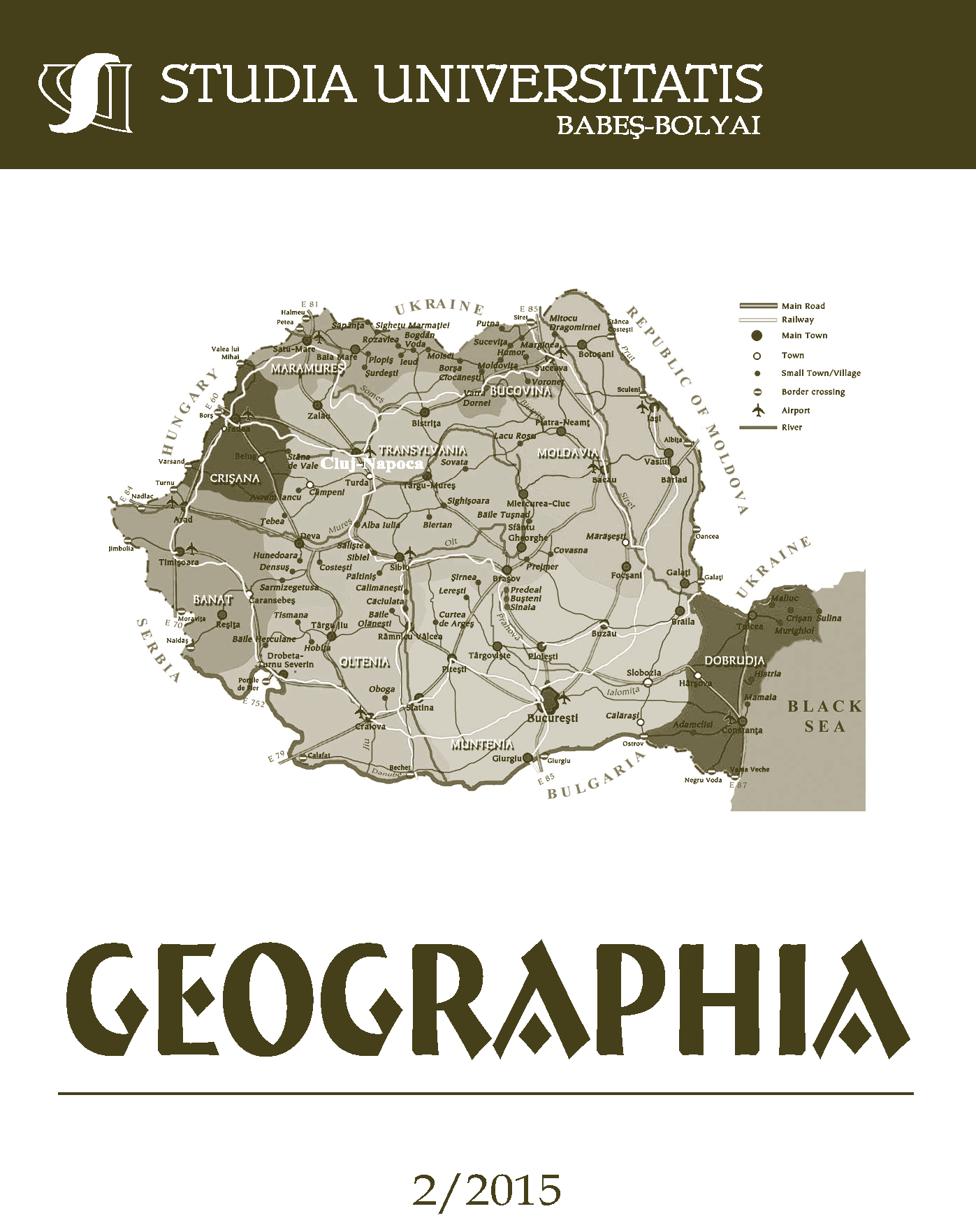THE SZEKLERS AND HUNGARIANS FROM ROMANIA
Keywords:
Romanians, Hungarians, Székely principalities, land, pashalics, corridor, ring, Glad, Menumorut, Gelu, Banat, Crișana, Transylvania.Abstract
The Szeklers and Hungarians from Romania. This study regards, as its main topic, the possibility of establishing at present, a geodemographical entity on Romania’s territory, since certain representatives of the Hungarian ethnical minority in our country, and with a particular insistence of those in the vicinity of the western border, always remember to bring into view the problem of establishing an autonomy, common to a Székely Land, located in the central area of our country, which would include Mureş, Harghita and Covasna counties. Without carrying out a detailed account of this situation, it needs to be mentioned, just as it will emerge of the following presentation, that such an approach has neither the most reduced geodemographical support, since the Szeklers, after being assimilated by the Hungarian ethnic group, are no longer present at the census of 20 October 2011. By taking into account the above mentioned aspects, in order to be able to respond to the insistent requests for autonomy in Transylvania, we proceeded to highlight, through a fairly detailed approach of the Hungarian ethnical minority, obviously in point of the number of inhabitants and of their distribution on Romania’s territory, resulting of this the fact that the number of Hungarians is of 1,227,623 people, value which related to those 20,121,641 inhabitants of Romania, means 6.10%. The total number of mentioned Hungarians is characterized by a pronounced concentration on Romania’s territory, standing out by creating a corridor with a diagonal aspect, on the northwest-southeast direction, consisting of seven counties, the first four (Satu Mare, Bihor, Sălaj and Cluj) being registered with 2.01% (404,561 inhabitants) of those 6.10% Hungarians, the following three (Mureş, Harghita and Covasna) accounting for 3.03% (609,033 inhabitants), and hence in the corridor are present 5.04% (1,013,594 Hungarians) of 6.10% at the level of the entire country. The above mentioned corridor is surrounded by a ring of 11 counties (Maramureş, Bistriţa-Năsăud, Suceava, Neamţ, Bacău, Vrancea, Buzău, Braşov, Sibiu, Alba and Arad), in which there are only 0.76% (153,397 people) of the Hungarians living in Romania, while in the other 18 counties and Bucharest municipality, the Hungarian ethnic group enrolls only with 0.30% (60,632 people) at national level (Table 7).
References
Berindei, I. O., Pop, Gr. (1972), Județele Patriei, Județul Bihor, Edit. Academiei Republicii Socialiste România, București, 1972.
Cocean, P., Niță, A., Dombay, Şt. (2013), Județele României, Județul Harghita, Edit. Academiei Române, București.
Coordonatori: Pop, Ioan-Aurel, Nägler, Thomas, Autori: Bărbulescu, Mihai; Pop Gr. P., Dörner, Anton, E., Pop Ioan-Aurel, Glodariu Ioan, Rotea Mihai, Nägler Thomas, Vasiliev Valentin (2003), Istoria Transilvaniei, vol. I (până la 1541), Institutul Cultural Român, Centrul de Studii Transilvane, Cluj-Napoca, 2003.
Horedt, Kurt (1958), Contribuții la Istoria Transilvaniei în secolele IV-XIII, București, p. 117-123 (vezi Thomas Nägler, Istoria Transilvaniei, vol. I, 2003, p. 212-225).
Nägler, Th. (1992), Așezarea sașilor în Transilvania, ediția a II-a, Edit. Kriterion, București.
Niță, A., Roșian Gh. (2012), Some Aspects Regarding the Territorial Evolution of Odorheiu Secuiesc Town, Geographia Napocensis, VI, 1, Cluj-Napoca.
Niță, A. (2006), Modificări în structura etnică a populației Depresiunii Brașov, în ultimul secol și jumătate, Studia Universitatis Babeş-Bolyai, Geographia, LI, 1, Cluj-Napoca.
Opreanu, S. (1929), Ținutul Săcuilor. Contribuțiuni de Geografie Umană și de Etnografie, Lucrările Institutului de Geografie al Universității din Cluj, vol. III. 1926-1929, p. 39-208 și 9 p. de fotografii, Cluj, Institutul de Geografie, Tiparul „Ardealul”, 1929.
Pop, Ioan-Aurel (2011), Din mâinile valahilor schismatici, Rumânii și puterea în Regatul Ungariei medievale (secolele XIII-XIV), Editura Litera, București.
Pop, P. Gr. (1972), România. Geografie Economică, Partea I-a, 427 p., Structura națională a populației, p. 71-77, Institutul Pedagogic Oradea, Facultatea de Istorie-Geografie, Oradea, 1972.
Pop, Gr. (1991), The National Structure of Romania’s Population, Studia UBB, Anul XXXVI, Geographia, 2, Cluj-Napoca, p. 3-15, 13 p. Lucrarea este publicată și în Românul Liber, London (în limba română), în aprilie, 1993, p. 16-17 (partea I-a) și mai, 1993, p. 16-17 (partea a II-a).
Pop, Gr. (1993), Ancestry of the Population in the United States (1990 Census), Studia Geographia, 2, Cluj-Napoca.
Pop, P. Gr. (2004), Structura etnică a României, în anul 2002, Revista Română de Geografie Politică, Anul VI, nr. 1-2, p. 17-34, Edit. Universității din Oradea.
Pop, Gr. (2005), Dealurile de Vest și Câmpia de Vest, Editura Universității din Oradea, 2005.
Pop, Gr. (2005), Cadrul natural, populația și dezvoltarea așezărilor, p. 22-39 (20 pagini), p. 42-43 (2 pagini, Harta generală), p. 49-73 (25 pagini), p. 345-352, Summary, Geography, 8 pagini) (Total = 55 pagini, format A 4), în Mănăstireni și Mănășturu Românesc. Satul sufletului meu, Edit. Studia, Cluj-Napoca.
Pop, P. Gr. (2007), Județele României, Județul Cluj, Edit. Academiei Române, București, 2007.
Pop, P. Gr., Rusu R. (2014), The National Structure of the Romanian Population at the 20th of October 2011 Census, Studia UBB, Geographia, volume 59 (LIX) 2014 aprilie 1.
Sălăgean T. (2006), Țara lui Gelou, Contribuții de Istoria Transilvaniei de Nord în secolele IX-XI, p. 5-26), Edit. Argonaut, 2006, Cluj-Napoca.
Suciu, C. (1967), Dicționar Istoric al Localităților din Transilvania, Vol. I. A – N, Edit. Academiei Socialiste România, București, 1967.
Suciu, C. (1968), Dicționar Istoric al Localităților din Transilvania, Vol. II. O – YZ, Edit. Academiei Socialiste România, București, 1968.
Downloads
Published
How to Cite
Issue
Section
License
Copyright (c) 2015 Studia Universitatis Babeș-Bolyai Geographia

This work is licensed under a Creative Commons Attribution-NonCommercial-NoDerivatives 4.0 International License.





 ©Studia Universitatis Babeş-Bolyai Geographia. Published by Babeș-Bolyai University.
©Studia Universitatis Babeş-Bolyai Geographia. Published by Babeș-Bolyai University.